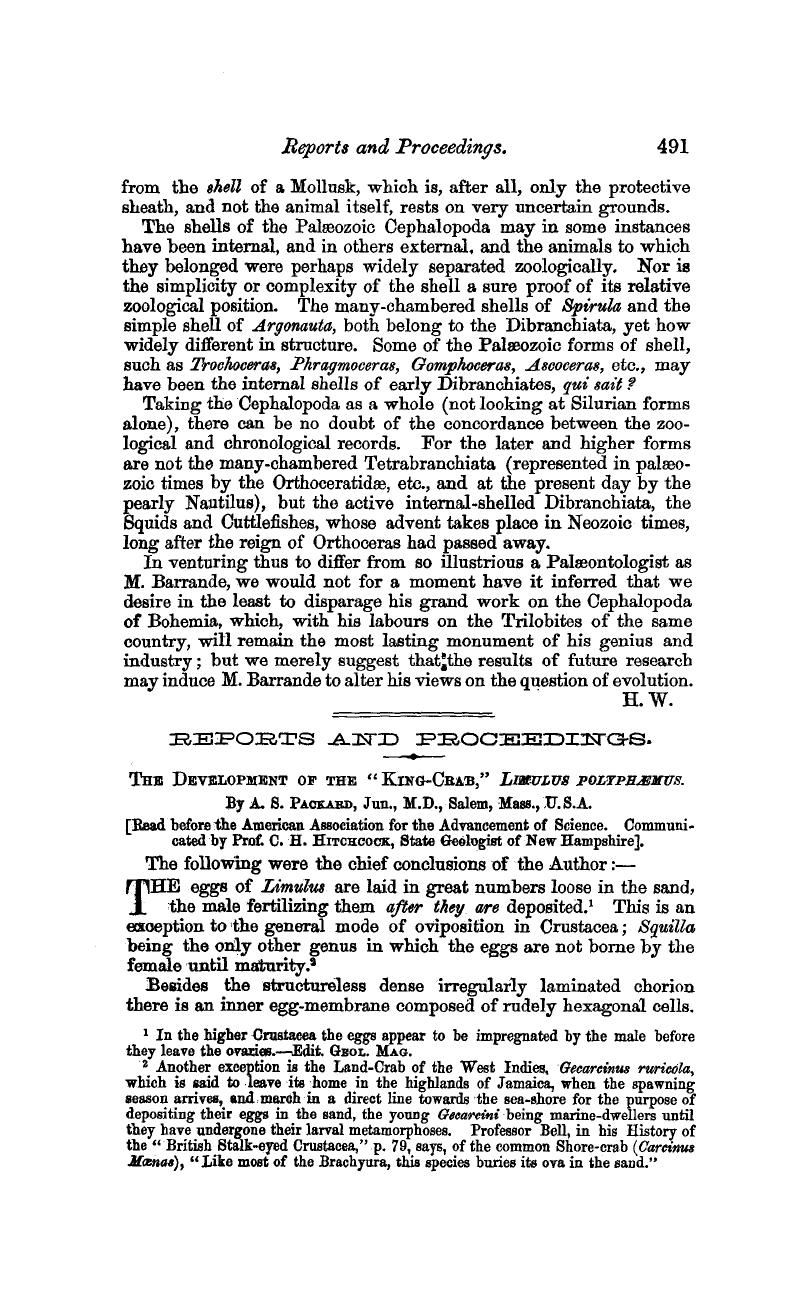No CrossRef data available.
Article contents
The Development of the “King-Crab,” Limulus Polyphæmus
Published online by Cambridge University Press: 01 May 2009
Abstract

- Type
- Reports and Proceedings
- Information
- Copyright
- Copyright © Cambridge University Press 1870
References
1 In the higher Crustaeea the eggs appear to be impregnated by the male before they leave the ovaries.—Edit. Geol. Mag.
2 Another exception is the Land-Crab of the West Indies, Gecarcinus ruricola, which is said to leave its home in the highlands of Jamaica, when the spawning season arrives, and march in a direct line towards the sea-shore for the purpose of depositing their eggs in the sand, the young Gecareini being marine-dwellers until they have undergone their larval metamorphoses. Professor Bell, in his History of the “British Stalk-eyed Crustacea,” p. 79, says, of the common Shore-crab (Carcinus Mœnas), “Like most of the Brachyura, this species buries its ova in the sand.”
page 492 note 1 This seems to be slightly misleading, since Dr. Packard's own statement speaks of important changes taking place in the larval king-crab before it arrives at the adult condition.—Edit. Geol. Mag.
page 492 note 2 See Report of Mr. E. Billings's paper, “Notes on some Specimens of Lower Silurian Trilobites’ (read before the Geological Society of London May 11th, 1870) Geol. Mag., 1870, Vol., VII., June, p. 291.
page 492 note 3 See also an excellent article on “The Horse-foot Crab,” by the Rev. S. Lockwood, Ph. D. in the American Naturalist, vol. iv., No. 5, for July, 1870, p. 257.


